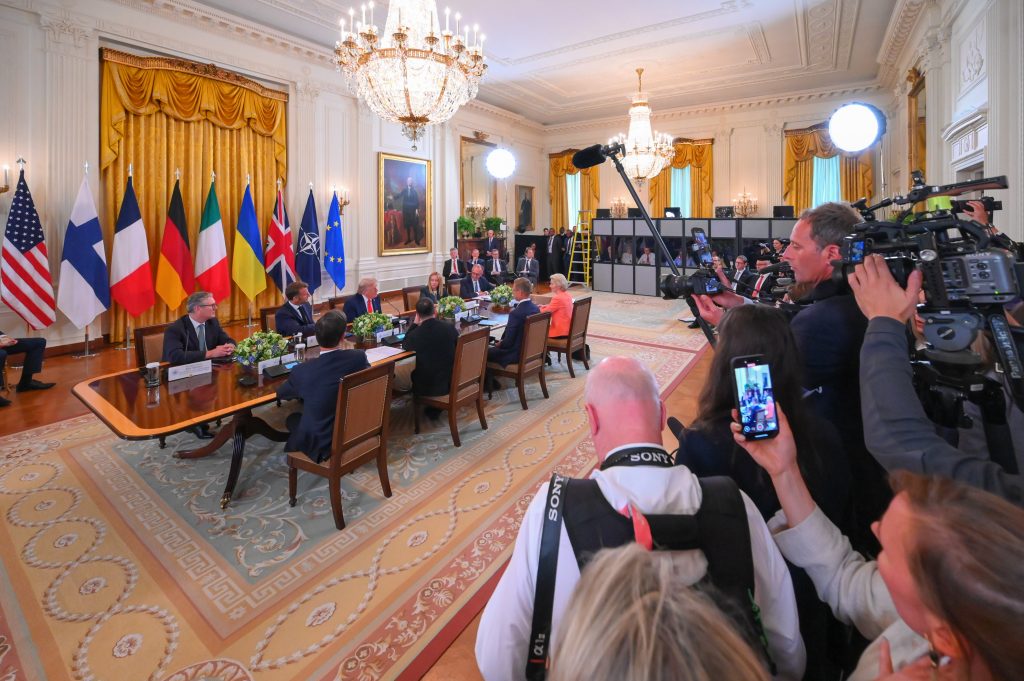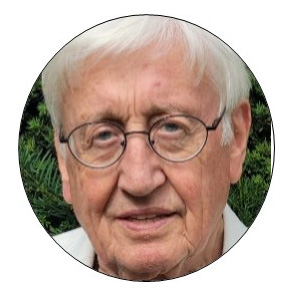Commentary by HARTMUT BÜHL – European News Journal, Paris

Peace in Ukraine remains far from sight and Europe continues to be subject to Trump’s whims.
The meeting in Alaska in August 2025, for example, was supposed to focus on a ceasefire in Ukraine, but the impression left by this summit in Anchorage is that Trump’s primary concern was to bring his esteemed guest, Vladimir Putin, back onto the international stage. The red carpet rolled out for the Russian president spoke volumes!
As we all know, this meeting in Anchorage brought nothing but renewed uncertainty to Ukraine – and to Europe. Putin, who was the first to take the microphone at the final press conference, rather than his host, as is the usual practice, gained an advantage, while Trump, who gained nothing, embarrassed himself.
“The meeting in Anchorage brought nothing but renewed uncertainty to Ukraine – and to Europe.”
Security guarantees for Ukraine?
However, the American president seemed to have understood at least one thing: Putin’s strategy of first negotiating a peace agreement, giving Russia all the political advantages as well as its territorial gains, and only then silencing the guns, would pose a great danger for Ukraine – because it would be tantamount to capitulation – but also for the whole of Europe.
A few days after his meeting with Putin, Trump invited Ukrainian President Volodymyr Zelensky to Washington. This time, Zelensky was careful to bring with him some key European allies, including German Chancellor Friedrich Merz, French President Emmanuel Macron, Commission President Ursula von der Leyen and NATO Secretary-General Marc Rutte. Their goal was clear: to show that Ukraine is not alone and to remind everyone that European security cannot be negotiated without the Europeans.
The most significant outcome of the meeting was Trump’s statement that security guarantees for Ukraine would be provided by European countries in coordination with the United States. He also stated that he would arrange a meeting between Putin and Zelensky, which has not happened so far.
Since then, discussions on security guarantees for Ukraine have accelerated. European leaders are trying to clarify how the United States’ commitment can be translated into action, aware that President Trump could change his mind again at any time. He eventually did, declaring that Washington was not prepared to send American troops to Ukraine. Finally, 26 countries out of the “Coalition of the Willing” have formally committed to providing security guarantees to Ukraine. These guarantees might take the form of troop deployments on Ukrainian territory, or ground or sea or air support.
A quite uncertain future
It is still unclear who will be the European figure responsible for establishing a coherent European position and defending it against Russia and the United States. Could it be German Chancellor Merz, British Prime Minister Starmer, or an Eastern European leader like Polish Prime Minister Tusk?
Meanwhile, the US President has once again changed his stance towards Russia: After his meeting with Zelensky on the sidelines of the UN General Assembly in New York on 23 September 2025, he stated on social media that he now believes that Ukraine, with military support from the US and NATO, can win the war and regain all the territories lost to Russia.
The power struggle continues. European skies have become a playground for Russian drones and military aircraft, and peace in Ukraine remains far from sight. There are fears that Putin will continue to gain ground before imposing peace on Ukraine, and that Trump will change his mind again and end up accepting peace at any price.
 Hartmut Bühl is European News Journal’s Editorial Director. Previously, he served for 17 years as Editor-in-chief of the magazine “The European – Security and Defence Union”.
Hartmut Bühl is European News Journal’s Editorial Director. Previously, he served for 17 years as Editor-in-chief of the magazine “The European – Security and Defence Union”.
Write to Hartmut: h.buehl@european-news-journal.com





